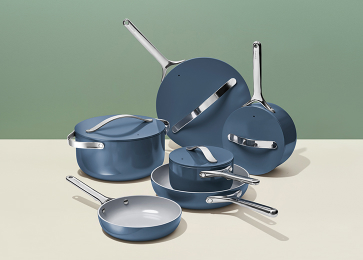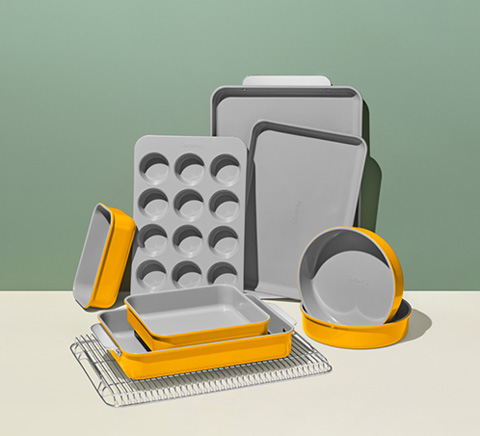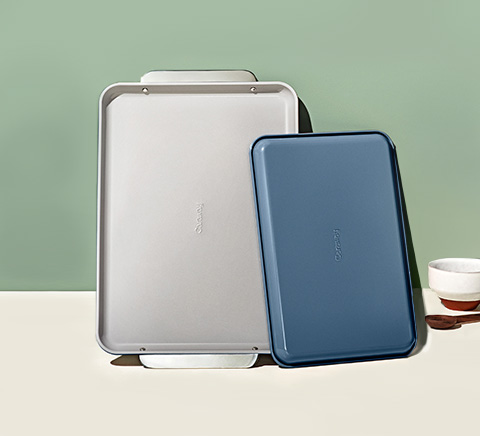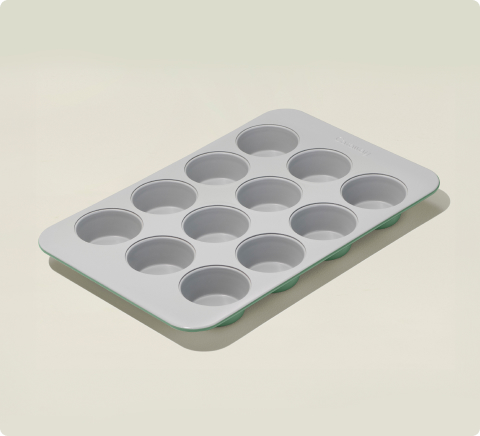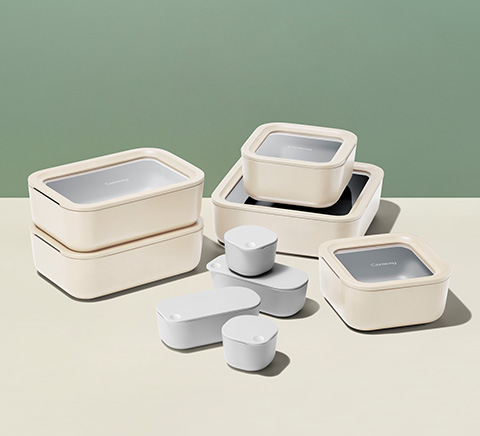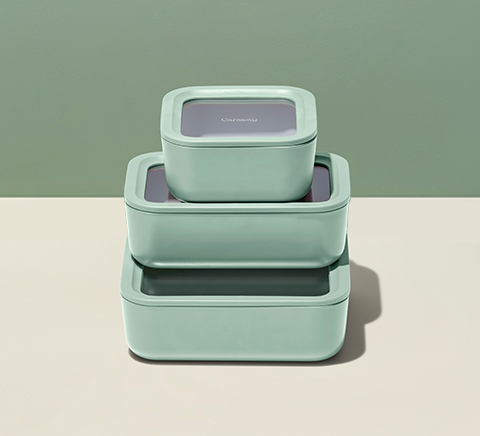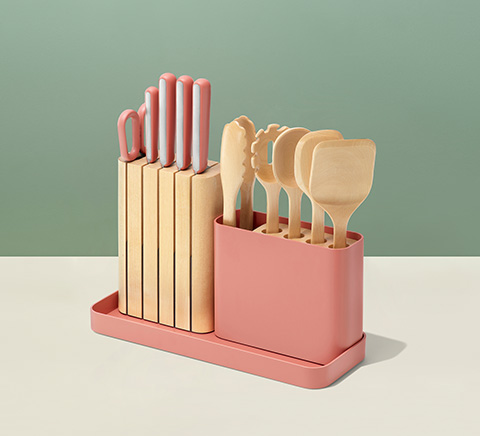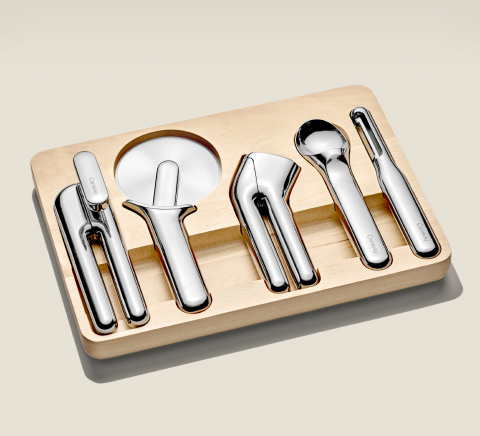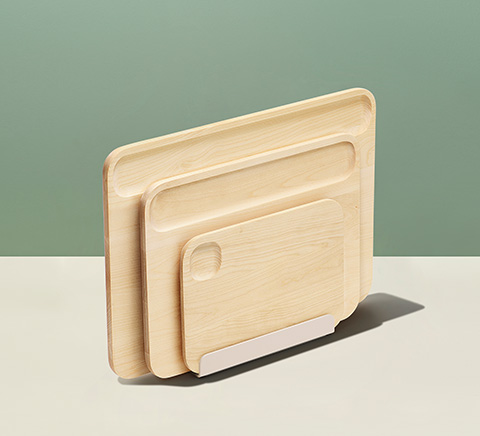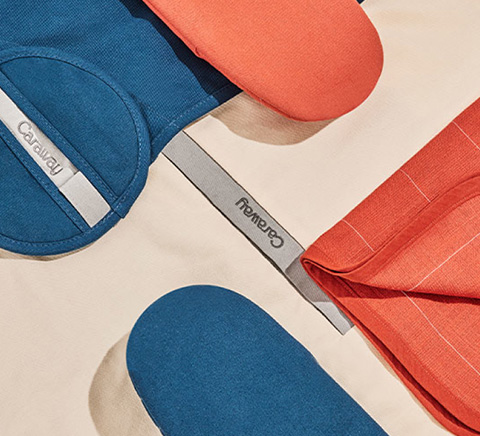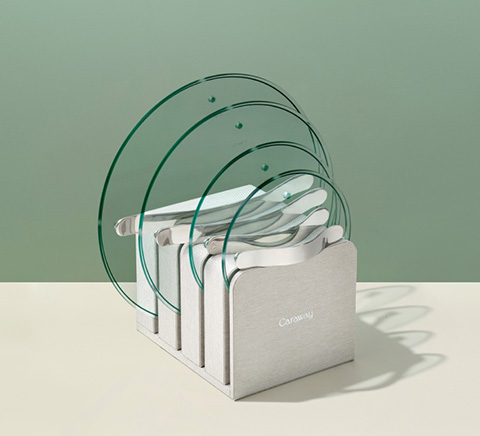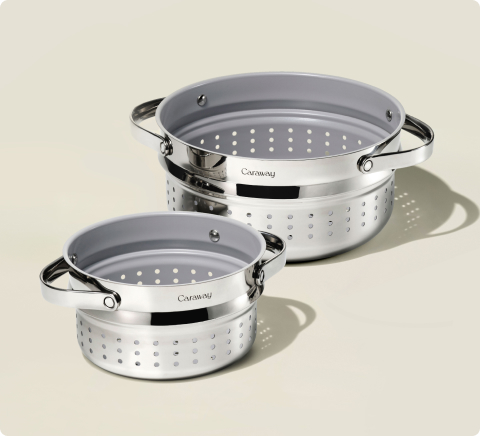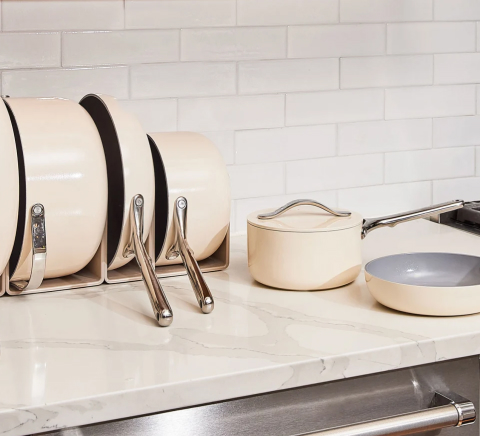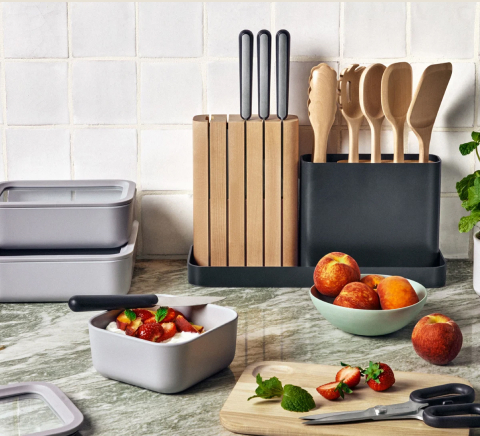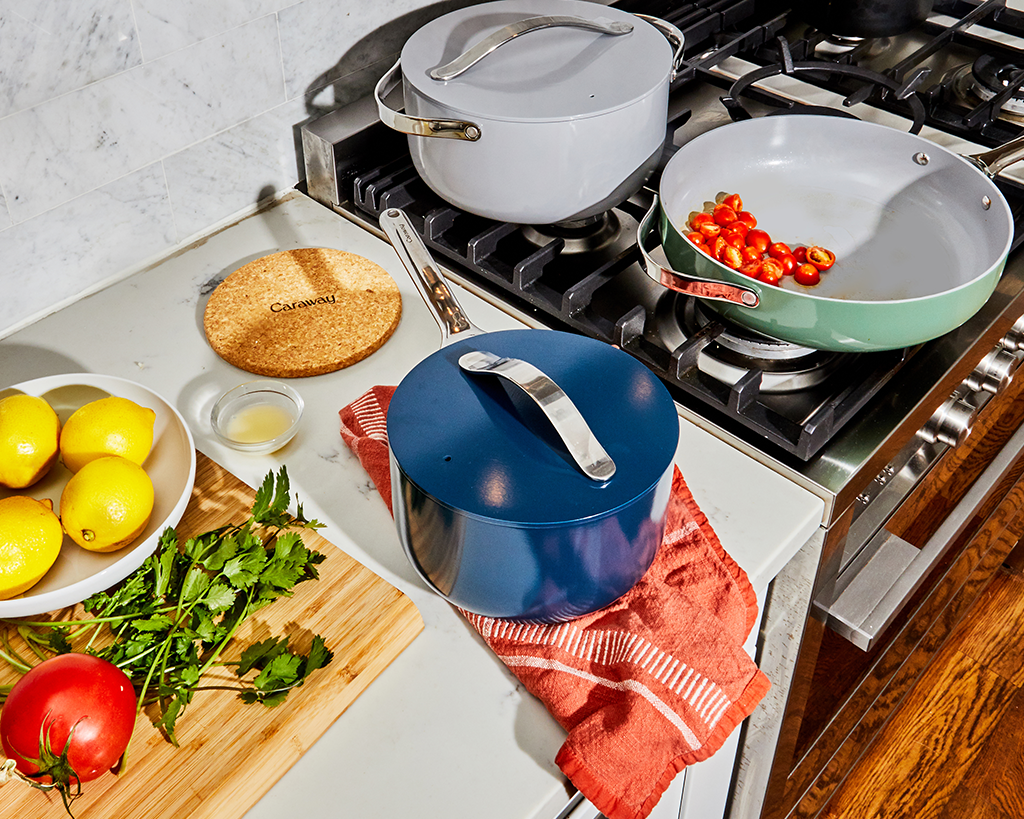Now that we’ve mastered the art of beautiful cookware, we figured it's time to take it to the next step. Read our chat with Elle Simone Scott, on-air talent and food stylist for America’s Test Kitchen, on achieving beautifully styled food at home.
Elle Simone Scott is many things: a two-time cancer survivor, the founder of She Chef Inc., an organization that provides mentoring for women of color aspiring to work in the culinary industry, and a star on-air talent and food stylist for America’s Test Kitchen (in addition to being the host of their first podcast, The Walk-In!). While Scott’s career is dynamic and trailblazing, deftly weaving through many roles in the culinary world, a throughway is her tenacity—and ability to bounce back from any challenge life throws at her. Below, Scott shares how she broke into food styling, along with tips on how to achieve flawlessly styled food, right at home.
Caraway: How did you get your start in food styling?
Elle: I went to a small trade school in New York, and the school had a relationship with Alex Askew, the founder of the Black Culinarian Alliance (BCA). He was able to forge a relationship between the school I was going to at the time, the Culinary Academy of New York, and The Food Network. At that time, The Food Network only took interns from elite schools like the Culinary Institute of America and the French Culinary Institute, but not trade school students. We were forming a new relationship, and they wanted the best students to go. I was probably considered one of the best students, but I was also just one of the oldest. I had already been through college and had some studiousness about myself, plus I was eager to get out of school.
When I got here, the people who I worked under were called food stylists, and it was the first time I'd heard of that phrase. They got the food ready for all the TV show segments and episodes filming that day. I did my internship for four months, then I was brought on as a freelancer at the Food Network after finishing culinary school.
Caraway: What are some easy, simple styling tips for folks at home?
Elle: I think it's hard to believe, but I tell people all the time to use their hands. People often want to use tools like tongs to do the spools for pasta, but I use my hands all the time (just make sure you’re gloved up!). It helps with making my spaghetti look perfectly swirled and getting a good mound.
Also, cleaning your plate after you plate your food does wonders. You will be amazed at how far wiping any oil, splashes, or splatters make! Just cleaning the edge of your plate really gives you a polished look. It seems like a very small thing, but it makes a big difference. A clean plate is a beautiful one.
Think about portions. If your filet mignon is not big, you don’t need half of a charred onion. You just need a little onion or maybe a scallion. Think about scale—is your plate too big? Too small? Consider the inside of that plate, too—plates have a lip, sort of a wider rimmed edge. That middle part is where your planning should happen. If you find yourself spilling over that middle circle in your plate, then your vessel's not big enough.
Caraway: What are some little-known styling tricks that people could use?
For cleaning up plates and sprucing them, I like to keep Q-tips on hand. I cut little squares of paper towels and keep them around in a station. I also like to keep a water and alcohol solution mix and use it with my Q-tips to get little spots off my plate. Sleekness is important.
Also, I like to remind people that sometimes plating is not necessary. Maybe that's not where the beauty lies. You have to think abstractly about the food. If you made a beef stew in a Dutch Oven, and there’s caramelization around the edge and the top, there’s bubbles brewing in the stew, and the vegetables have risen, sometimes that's the beauty. You don't always have to take the food away from the vessel.
You have to really decide—where the beauty is for you? Every food stylist will find a different part of the process beautiful. For people at home, the beauty is that moment where you look at the food and you're like, “Oh yeah”—that's when you should take the picture. A plate doesn't always have to come into play. That moment when the food knocks your socks off, that's the thing you need to take a picture of. I think people so badly want to see something on a plate or composed, and that’s not always where the beauty lies.
